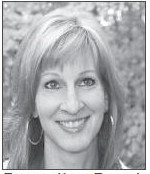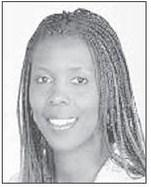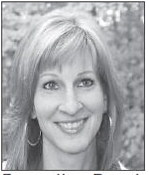Cesarean Births


She had given birth twice before she found out I was coming. I grew inside her for nine months, getting the nutrients I needed through a lifeline called an umbilical cord. I ate what she ate. I drank what she drank. I breathed what she breathed. And scientists say that she and I shared DNA, the genetic material that makes each of us the individuals we become. I probably even heard my mother’s thoughts in my head as she carried me in her womb, though I don’t remember a thing. I was just a tiny passenger, along for the ride, waiting to make my grand entrance into the world.
My mother has a long, vertical Cesarean scar on her belly that tells the tale of the days my siblings and I started our lives. As a young girl, I saw her scar when I watched my mother change her clothes. Sometimes she’d share the story with me.
“In December of 1960, I started bleeding,” Mom said. “I was bleeding so much that I had to place two towels between my legs just to get to the hospital.”
Cesarean Sections were not as common in the early sixties as they are now. Known as a C-Section, a Cesarean delivery is a surgical procedure by which a baby is delivered through an incision in the mother’s abdomen, often performed when a natural vaginal delivery is too risky for the baby or the mother.
“Before that day, I had only heard of one Cesarean delivery,” she told me. “The president’s wife, Jackie Kennedy, had to have a C-Section when John, Jr., was born earlier that year.”
At the hospital, Mom found out that her placenta had burst — a dangerous condition called placental abruption, when the placenta separates from the wall of the uterus.
“So, Andy was coming, and it was cold that day, and it was an emergency situation,” Mom remembers. “Dr. Beard had only performed a C-Section one other time, and I think it was when he was in Mississippi training to be a doctor. But he did it that day — he cut me open and lifted Andy right out of my belly. Andy lived, and so did I.”
Indeed, my sister and I came into existence through that same process in 1962 and 1963. That scar signifies the portal where my siblings and I were lifted into life as we know it.
I look at my belly button sometimes and think of the wrinkled impression in my abdomen as if it was an outlet. It was a lifeline. It’s where Mom and I were plugged together in the months before I drew my first breath and felt air in my lungs, before the doctor cut me free. Mom and I were physically connected until that moment, and we are connected now, though in a different way.
So on this Mother’s Day week, I slow down and celebrate the woman who made sure I got here okay and who still mothers me and showers me with heaping helpings of love, kindness and her sweet caring nature. I’m mindful of how fortunate I am to have Wanda Marie Jarriel Lanier Collins as my mother, and how lucky I am that she’s just a phone call away — and that she and I can still share moments of drinking coffee together and watching the birds visit her feeder in the mornings. We talk about flowers and friends. She’s my biggest fan, and I am hers.
As I grow older, I become more like my mother — I look like her, I say things she would say every day, and I love like her. I guess I acquired her gift of loving others from watching her for 57 years.
A lot of my friends have lost their mothers and some are estranged from their moms, but I still have mine. And this week, just as the other weeks in the year, I am grateful beyond words. Happy Mother’s Day!






out of
Posted on